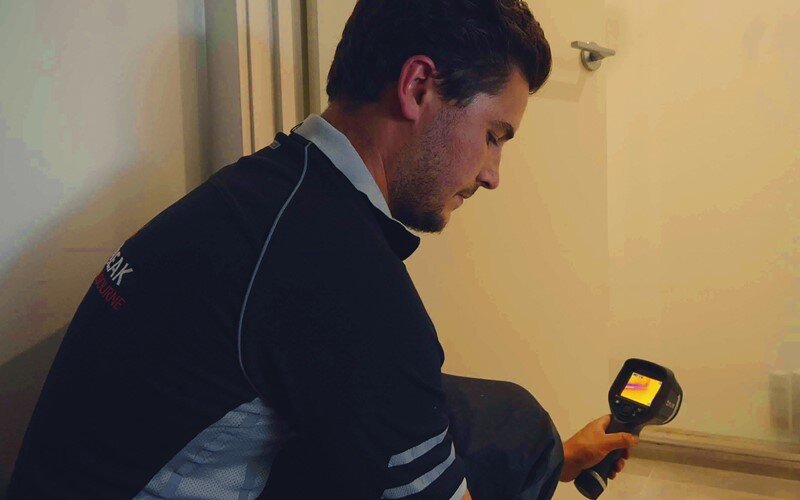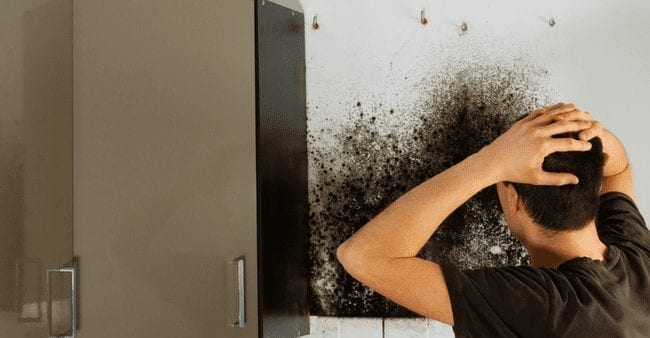Identify Hidden Water Line Leaks: 6 Smart Tricks
Identify Hidden Water Line Leaks: 6 Smart Tricks
Blog Article
The content down below relating to Top leak detection hacks is immensely informative. Don't bypass it.

Early detection of dripping water lines can reduce a potential calamity. Some tiny water leakages might not be noticeable.
1. Take A Look At the Water Meter
Every house has a water meter. Inspecting it is a surefire way that helps you find leakages. For beginners, switch off all the water sources. Make certain nobody will flush, make use of the faucet, shower, run the cleaning device or dishwasher. From there, go to the meter and watch if it will change. Because no one is utilizing it, there should be no movements. That shows a fast-moving leakage if it moves. If you spot no adjustments, wait a hr or two and also inspect back again. This suggests you may have a slow-moving leakage that might also be underground.
2. Examine Water Intake
Assess your water bills as well as track your water usage. As the one paying it, you must discover if there are any type of disparities. If you detect sudden changes, regardless of your intake coinciding, it indicates that you have leakages in your plumbing system. Keep in mind, your water expense should drop under the very same range each month. An unexpected spike in your costs indicates a fast-moving leakage.
Meanwhile, a consistent increase monthly, despite the same habits, reveals you have a slow-moving leakage that's likewise slowly rising. Call a plumber to completely examine your home, specifically if you really feel a cozy location on your flooring with piping beneath.
3. Do a Food Coloring Test
When it pertains to water usage, 30% originates from bathrooms. Examination to see if they are running appropriately. Decrease specks of food color in the container as well as wait 10 mins. There's a leak in between the storage tank and dish if the shade in some way infiltrates your dish during that time without flushing.
4. Asses Outside Lines
Don't neglect to check your exterior water lines too. Test faucets by attaching a yard tube. Ought to water leak out of the link, you have a loose rubber gasket. Replace this as well as make certain all connections are tight. If you've obtained an automatic sprinkler, it will help get it skillfully took a look at and also kept annually. One tiny leak can squander tons of water as well as surge your water expense.
5. Assess the scenario as well as inspect
House owners need to make it a practice to inspect under the sink counters and also also inside cabinets for any type of bad odor or mold development. These two warnings show a leak so timely interest is called for. Doing routine inspections, even bi-annually, can save you from a major issue.
Examine for stainings as well as damaging as most devices and also pipelines have a life expectations. If you suspect leaking water lines in your plumbing system, don't wait for it to escalate.
Early detection of dripping water lines can minimize a possible catastrophe. Some small water leaks may not be visible. Checking it is a proven means that assists you discover leakages. One little leakage can lose bunches of water as well as spike your water expense.
If you believe dripping water lines in your plumbing system, don't wait for it to intensify.
How to Know If Your Home Has a Hidden Leak
Water Meter Reveals Inexplicable Water Usage
If you’d like to test whether or not there’s a leak somewhere in your home, you can do this using your water meter. Here is how to conduct the test:
Don’t use any water in your home for at least 30 minutes; this also means not turning on faucets or water-using appliances.
Go outside, and check your water meter for activity.
If your water meter shows that there was activity, even though no one was using any water, this proves that there is a leak in your home.Visible Mold or Mildew Growth
Leaks behind walls create moist, dark environments that allow mold and mildew to grow and thrive. Eventually, you might see mold growth forming on the wall closest to a hidden leak.
If mold is growing in an area that receives a high amount of moisture, such as a bathroom, it may simply be an indication that better ventilation is needed. However, if you see mold growth on a wall or the ceiling in an area where you would not expect, you probably have a hidden leak.
Musty, Mildew Odor
Sometimes you might not be able to see the mold or mildew that is growing as a result of a leak. However, the smell can give the problem away just as easily. If you catch a whiff of something musty, there’s a good chance that old water is collecting somewhere in your home that you can’t see.
Stained/Warped Walls, Ceilings, or Floors
When your home soaks up water, a variety of red flags can become visible, including ceiling stains, bubbling drywall, warped walls, and sagging floors. While these issues can be caused by excess humidity, they can also be signs that a pipe or plumbing connection has started leaking behind your walls.
Inexplicably High Water Bill
After a while, you get a general sense for what your water bill should be. If you own a pool or sprinkler system, your bill will tend to be higher during summer. However, if you receive a water bill that seems especially high, and you can’t figure out what caused it, then you may have a hidden leak somewhere that’s increasing your bill.
https://www.plumbingjoint.com/blog/2019/july/how-to-know-if-your-home-has-a-hidden-leak/

As a fervent reader about Leaking water lines, I think sharing that piece of content was essential. Appreciated our post? Please share it. Help someone else discover it. We enjoy reading our article about Locating water leaks.
Fix it today! Report this page